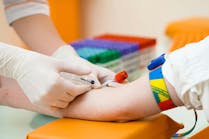It is estimated that about 60 percent to 70 percent of clinical decisions are made based on laboratory results.1 Laboratory quality, therefore, plays a vital role in the delivery of quality patient care. But quality can mean different things to different labs and different supervisors. This article will briefly explore the concept of laboratory quality and how a closely monitored quality assurance plan can help ensure efficient laboratory operations.
Quality can be an intangible, hard-to-measure concept, and it has been defined in multiple ways by different entities over the years: from a product that is free of deficiencies (ASQ); to a product whose inherent characteristics fulfill requirements (ISO 9000); to a system that gets the right care to the right patient, at the right time (HHS.gov).
One recent consensus, from the Organization for Economic Cooperation and Development, stresses “that quality involves safety, effectiveness, appropriateness, responsiveness, or patient centered care, equity or access and efficiency.”2 In laboratory medicine, quality is often interpreted as adherence to regulatory standards3 or compliance with CLIA regulations. Where one might take issue with such formulations is that they seem to imply that without requirements, there would be no need for quality. In fact, there are situations in the laboratory for which there is no set regulatory standard; situations that may warrant careful evaluation and consideration from laboratory management.
CLIA regulations apply to all laboratories the same,4 providing a roadmap to ensure laboratories can meet minimum quality standards. But not all laboratories are created equal, and therefore quality is much more than laboratory compliance.
The World Health Organization (WHO) defines quality in laboratory medicine as the ability to produce accurate, reliable, and timely results. WHO also stresses that it is important for a laboratory to have a good laboratory quality management system (QMS) in order to achieve this goal.5
Quality management system
Laboratory continuous quality monitoring is not a novel idea. Section 493.1200 (b) of the CLIA regulations states, “each laboratory’s quality system must include an assessment component that ensures continuous improvement of the laboratory’s performance and services through ongoing monitoring that identifies, evaluates and resolves problems (USDHHS, 2003).6
So what is new about laboratory quality? The Patient Protection and Affordable Care Act of 2010 has changed the laboratory landscape, and as a result quality has become more relevant than ever. The new impetus is for laboratories to think about value instead of volume, which translates into a need to have leaner processes, work more efficiently, eliminate redundant testing, and work cooperatively with the rest of the clinical patient management team.7
A QMS is an overarching system of specific policies and procedures to address all the activities within a laboratory. A QMS goes beyond Quality Control (QC) and Quality Assurance (QA), and it entails looking at the laboratory as an all-inclusive system, ensuring there are guidelines for addressing activities in all areas. A comprehensive QMS can help a laboratory ensure that all activities are monitored and evaluated, and results are accurate and reliable.
There are different QMS models out there that can be used. Whichever is selected, it is essential that the QMS addresses all activities in the path of workflow from the pre-analytic to the post-analytic testing phase. To ensure the quality of the overall system, lab leaders need to ensure the quality of the activities in the different testing phases.
Quality assurance reviews
A good QMS will require ongoing assessments as part of the QA plan. A QA plan is the backbone of the laboratory QMS.3
Quality assurance reviews should be tailored to the unique needs of the laboratory. Factors such as staff competency, test complexity, population served, documentation practice tendencies, test volume, etc., should be taken into consideration when determining the focus and frequency of reviews.
Data obtained from QA reviews should be evaluated carefully by the laboratory director or manager, and opportunities for improvement should be realized. Data evaluation will reveal the risks or tendencies specific to your system, which can lead to errors. Once risks are identified, efforts should be guided toward corrective and preventive measures. Error detection, correction, and prevention are the ultimate goals of a well-structured QA plan.
A culture of quality
Promoting a culture of quality should not only be done during the inspection window; it should be an everyday effort. In addition to having competent staff, ensuring all standard operating procedures are up to date and followed, and monitoring processes everyday through quality control practices, the laboratory must have a good QA plan. A QA plan will look at all the activities performed on the path of workflow from the pre- to post-analytic phase and determine if there are opportunities for improvement.
Laboratories must remember that quality is a lot more than regulatory compliance, and it includes having competent staff, streamlined processes, good communication, and constant evaluation.
REFERENCES
- The Lewin Group. The value of laboratory screening and diagnostic tests for prevention and health care improvement. http://www.chi.org/uploadedFiles/Industry_at_a_glance/Lewin%20Report%20on%20Dx%20Tests%20(2009).pdf.
- Anderson G, Hussey PS. Comparing health system performance in OECD countries. Organization for Economic Cooperation and Development. Health Aff (Milwood). 2001;20: 219-232 doi: 10.1377.
- Dai SY. What defines a laboratory Quality System? www.foodsafetymagazine.com/magazinearchive1/octobernovember-2013/what-defines-a-laboratory-quality-system
- Harmening, D. Laboratory Management Principles and Processes. 2nd edition. Philadelphia, PA. FA Davis; 2007.
- World Health Organization. Laboratory Quality Management System Handbook.
http://apps.who.int/iris/bitstream/10665/44665/1/9789241548274_eng.pdf
Published: 2011. Accessed: March 1, 2016. - Clinical Laboratory Improvement Amendments of 1988:42 CFR [K(1)-493.1200 (b)].
- Miles J, Weiss RL. The role of laboratory medicine in Accountable Care Organizations. https://www.aruplab.com/files/resources/suite/ACO%20Lab%20Strategy_whitepaper.pdf.
Nancy I. Alers, MS, MT(ASCP)CM, serves as a Laboratory Director at Fort Washington Medical Center in Fort Washington, MD.





